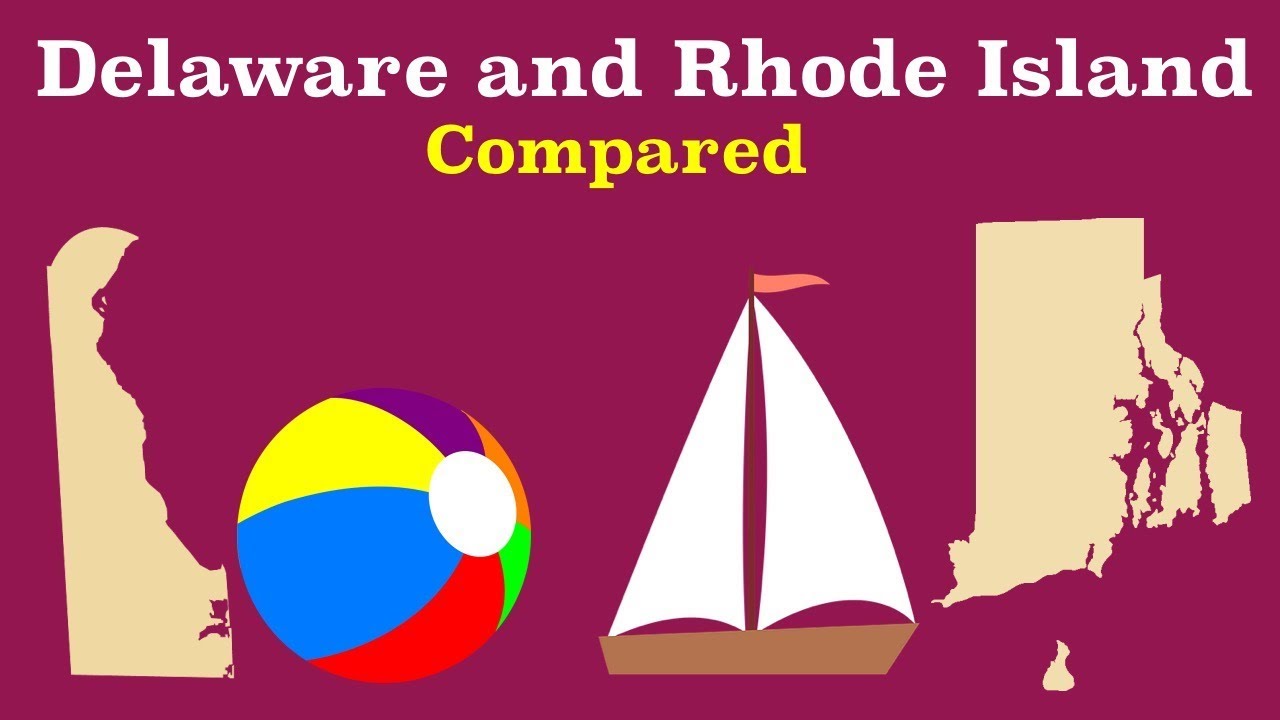Introduction
Rhode Island and Delaware are two small states located on the east coast of the United States. While both states are known for their rich history and cultural significance, many people often wonder which state is smaller in size. In this article, we will explore the geographical, population, land area, and population density comparisons between Rhode Island and Delaware. Additionally, we will delve into the history, economic factors, political structure, infrastructure, and cultural similarities and differences of these two states to gain a comprehensive understanding of their overall sizes.
Geographical Comparison of Rhode Island and Delaware
Rhode Island, also known as the "Ocean State," is located in the New England region of the United States. It is bordered by Connecticut to the west and Massachusetts to the north and east. Delaware, on the other hand, is situated on the Atlantic Coast, between Maryland to the south and New Jersey to the north. In terms of geographical size, Rhode Island is smaller than Delaware. Rhode Island covers an area of approximately 1,214 square miles, making it the smallest state in the country. Delaware, on the other hand, has a slightly larger area of approximately 1,949 square miles.
Population Comparison of Rhode Island and Delaware
When it comes to population, however, Rhode Island surpasses Delaware. As of the latest available data, Rhode Island has a population of around 1.1 million people, making it the 43rd most populous state in the United States. Delaware, in contrast, has a smaller population of approximately 990,000 people, ranking it as the 45th most populous state. Despite being smaller in size, Rhode Island has a slightly higher population than Delaware.
Land Area Comparison of Rhode Island and Delaware
While Rhode Island may have a smaller geographic area than Delaware, it is essential to consider the land area comparison between the two states. Rhode Island has a land area of around 1,034 square miles, accounting for about 85% of its total area. In comparison, Delaware has a larger land area of approximately 1,949 square miles, indicating that a higher percentage of its total area consists of land. Therefore, even though Rhode Island is smaller in overall size, its land area is relatively comparable to that of Delaware.
Population Density Comparison of Rhode Island and Delaware
Population density is another crucial factor in determining the overall size of a state. When comparing the population density of Rhode Island and Delaware, we can observe significant differences. Rhode Island has a higher population density, with approximately 1,026 people per square mile. Meanwhile, Delaware’s population density stands at around 503 people per square mile. This means that Rhode Island has a denser population, indicating a higher concentration of people within its smaller land area.
History of Rhode Island and Delaware
Both Rhode Island and Delaware have rich histories that have shaped their identities. Rhode Island was founded by Roger Williams in 1636 and was known for its religious freedom and tolerance. It played a significant role in the American Revolution and became the 13th state to ratify the United States Constitution. Delaware, on the other hand, was the first state to ratify the Constitution, making it the first state to join the Union. It was founded by Swedish and Dutch settlers in the early 17th century and played a crucial role in the development of the United States.
Economic Comparison of Rhode Island and Delaware
In terms of the economy, Rhode Island and Delaware have distinct characteristics. Rhode Island has a diverse economy, with sectors such as healthcare, education, tourism, and manufacturing contributing to its GDP. It is known for its vibrant arts scene and has a strong maritime industry due to its coastal location. Delaware, on the other hand, has a thriving chemical industry and is home to many large corporations due to its favorable business environment. It also benefits from its proximity to major metropolitan areas such as Philadelphia and New York City.
Political Structure of Rhode Island and Delaware
Both Rhode Island and Delaware have similar political structures as they are organized as representative democracies. They have a governor as the chief executive, a bicameral legislature (a House of Representatives and a Senate), and a system of local governments. However, there are slight differences in their political systems, such as the number of representatives and senators per district. Despite these differences, both states prioritize the principles of democracy and ensure that their citizens have a voice in the political decision-making process.
Infrastructure Comparison of Rhode Island and Delaware
Rhode Island and Delaware both have well-developed infrastructures that support their economies and connect their communities. Rhode Island has an extensive road network, including several major highways, such as Interstate 95 and Interstate 195. It also has a well-connected public transportation system, including buses and commuter rail services. Similarly, Delaware has a well-maintained highway system, including Interstate 95 and Interstate 495, which provide easy access to neighboring states. Additionally, Delaware has an international airport and several regional airports, facilitating air travel.
Cultural Similarities and Differences
Despite their small sizes, Rhode Island and Delaware have unique cultural identities. Rhode Island has a rich history of religious diversity, with influences from various European settlers. It is known for its vibrant arts and music scene, with Providence, the capital city, being home to numerous theaters, galleries, and music venues. Delaware, on the other hand, has a mix of rural and urban cultures, with a strong emphasis on community and family values. It is known for its annual festivals, such as the Delaware State Fair, which celebrate its agricultural heritage.
Conclusion: Size Comparison of Rhode Island and Delaware
In conclusion, when comparing the sizes of Rhode Island and Delaware, it is evident that Rhode Island is smaller in terms of both geographical area and land area. However, Rhode Island has a slightly higher population and population density than Delaware. Despite these differences, both states have unique histories, thriving economies, robust political structures, well-developed infrastructures, and distinct cultural identities. Whether it is exploring the picturesque coastline of Rhode Island or experiencing the warm hospitality of Delaware, both states offer a wealth of experiences in their own small but significant ways.
Further Research and Sources
For further research on Rhode Island and Delaware and a more in-depth analysis of their specific characteristics, it is recommended to explore official government websites, historical archives, academic journals, and reputable news sources. These sources will provide additional insight into various aspects of the two states, including their demographics, economic indicators, historical events, political structures, infrastructure developments, and cultural practices. By delving deeper into these topics, a more comprehensive understanding of the size and significance of Rhode Island and Delaware can be acquired.





